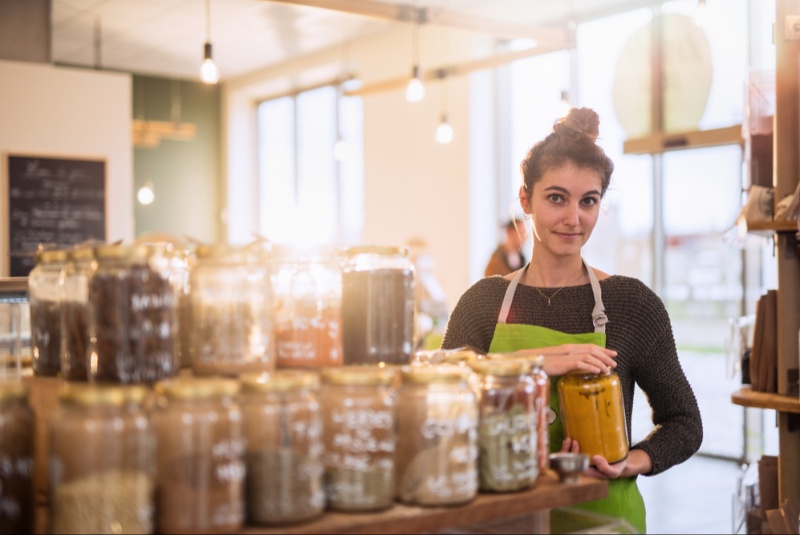Unlock the secrets of choosing the freshest spices with these essential tips that cater to both the seasoned chef and the kitchen novice. From understanding aroma and color to examining packaging, this comprehensive guide will empower you to make informed decisions, ensuring that every pinch and dash elevates your culinary creations to new heights.
1. The Sensory Experience: Evaluating Aroma and Color
Aromatic Intensity
Begin your spice selection journey by evaluating the aromatic intensity. Fresh spices release a potent and captivating fragrance that signifies their essential oils are intact. Gently crush or rub the spice between your fingers and inhale deeply. Opt for spices that exhibit a strong and vibrant aroma, avoiding those that appear dull or lack fragrance.
Vibrant Color
Assess the color of the spice. Vibrant and rich hues are indicative of freshness. Be cautious of spices that have faded or appear dull, as this may signify exposure to light or prolonged storage. Choose spices that boast a lively and natural color, as they are more likely to deliver robust flavors.
2. Whole vs. Ground: A Decision for Maximum Flavor
Choosing Whole Spices
Consider opting for whole spices when possible. Whole spices, such as cinnamon sticks, cardamom pods, or peppercorns, retain their flavor and aroma for a more extended period. Grind these spices just before use to experience their full spectrum of flavors.
Quality in Ground Options
If choosing ground spices, prioritize quality. Ground spices are convenient but are more prone to losing their freshness. Select reputable brands and ensure that the packaging is airtight to preserve the integrity of the ground spice. Avoid purchasing ground spices in bulk unless you anticipate frequent use.
3. Packaging Matters: Protecting Spices from Deterioration
Airtight Containers
Inspect the packaging for airtight seals. Proper packaging is crucial for preserving spice freshness. Choose spices stored in airtight containers or packaging that prevents exposure to air, moisture, and light. Transparent containers should be made of tinted or opaque materials to shield spices from light degradation.
Avoiding Clumped Spices
Beware of clumped spices. Moisture can lead to clumping, affecting both the texture and flavor of the spice. Choose spices that are free-flowing and loose within their packaging, indicating proper storage conditions.

4. Seasonal Considerations: Harvesting Time Impacts Flavor
Understanding Harvesting Seasons
Familiarize yourself with harvesting seasons. Spices, like fruits and vegetables, have peak harvesting times. Knowing when a spice is typically harvested can give you insights into its potential freshness. Some spices may be more vibrant and flavorful when obtained shortly after harvest.
Regional Variations
Explore regional variations in spice quality. Certain spices thrive in specific climates and regions. For example, saffron from Iran or vanilla from Madagascar is renowned for its exceptional quality. Consider exploring spices from their native regions for an authentic and superior flavor experience.
5. Purity and Additives: Reading Labels for Quality
Checking for Additives
Read labels to ensure purity. Quality spices should contain only the spice itself without unnecessary additives, preservatives, or fillers. Avoid products with long lists of ingredients, as they may compromise the authenticity and flavor of the spice.
Opting for Organic Options
Consider choosing organic spices. Organic spices are cultivated without synthetic pesticides or fertilizers, preserving the purity of the spice. Look for reputable organic certifications to ensure that your spices are produced with a commitment to environmental sustainability.
6. Grading Systems: Understanding Quality Standards
Exploring Grading Systems
Understand grading systems for specific spices. Some spices, like vanilla and saffron, have grading systems that indicate quality levels. Familiarize yourself with these grading systems to make informed decisions when selecting these particular spices.
Investing in High-Quality Varieties
Invest in high-quality varieties for impactful flavors. While premium-grade spices may be pricier, they often deliver a more potent and nuanced flavor. Consider them as an investment in elevating your culinary creations to new heights.
7. Specialty Spice Shops: A Haven for Freshness
Exploring Specialty Spice Shops
Consider exploring specialty spice shops. Specialty shops often prioritize freshness and quality, offering a curated selection of premium spices. Engage with knowledgeable staff who can guide you in choosing the best spices for your culinary needs.
Bulk Buying with Caution
Exercise caution when buying spices in bulk. While bulk purchasing may seem cost-effective, spices are best enjoyed when fresh. Consider purchasing smaller quantities that align with your cooking habits to ensure a continuous supply of vibrant and flavorful spices.
Elevate Your Culinary Adventures
The journey to selecting fresh spices is a sensory exploration that adds depth and richness to your culinary adventures. Armed with these tips, you can confidently navigate the spice aisle, ensuring that every pinch and sprinkle imparts an explosion of flavor to your dishes. Elevate your culinary creations, turning each meal into a culinary masterpiece with the vibrant and aromatic touch of fresh spices.




